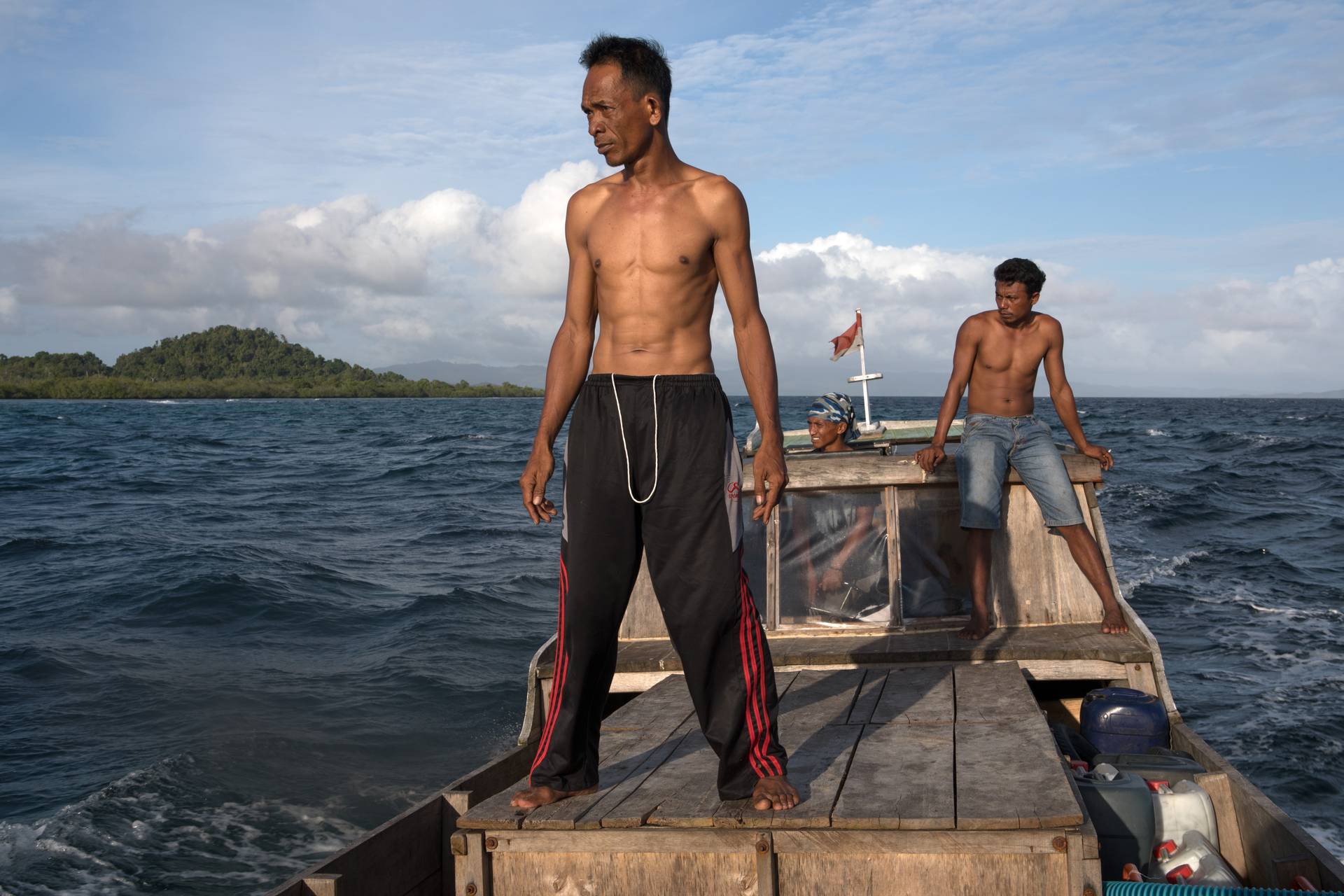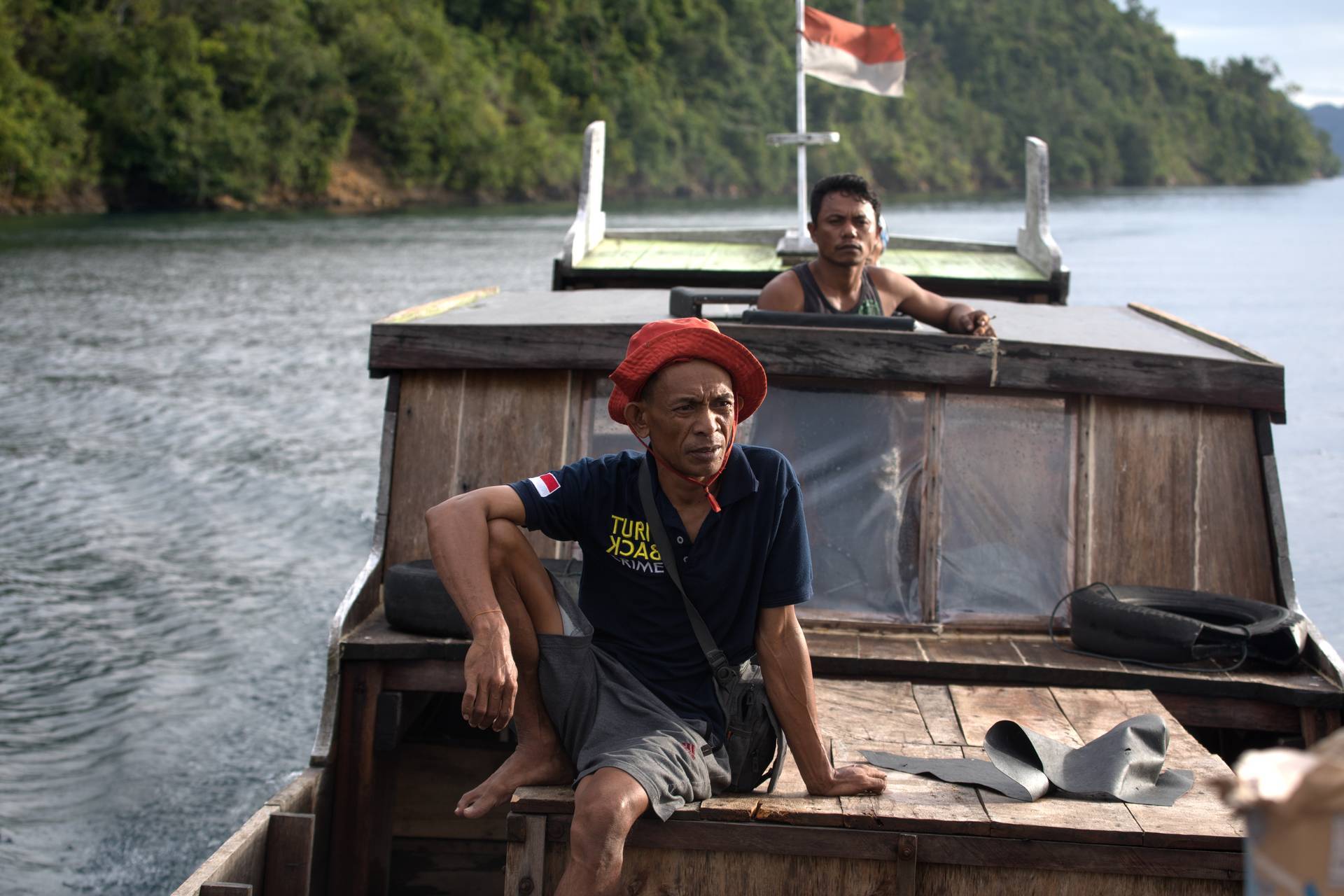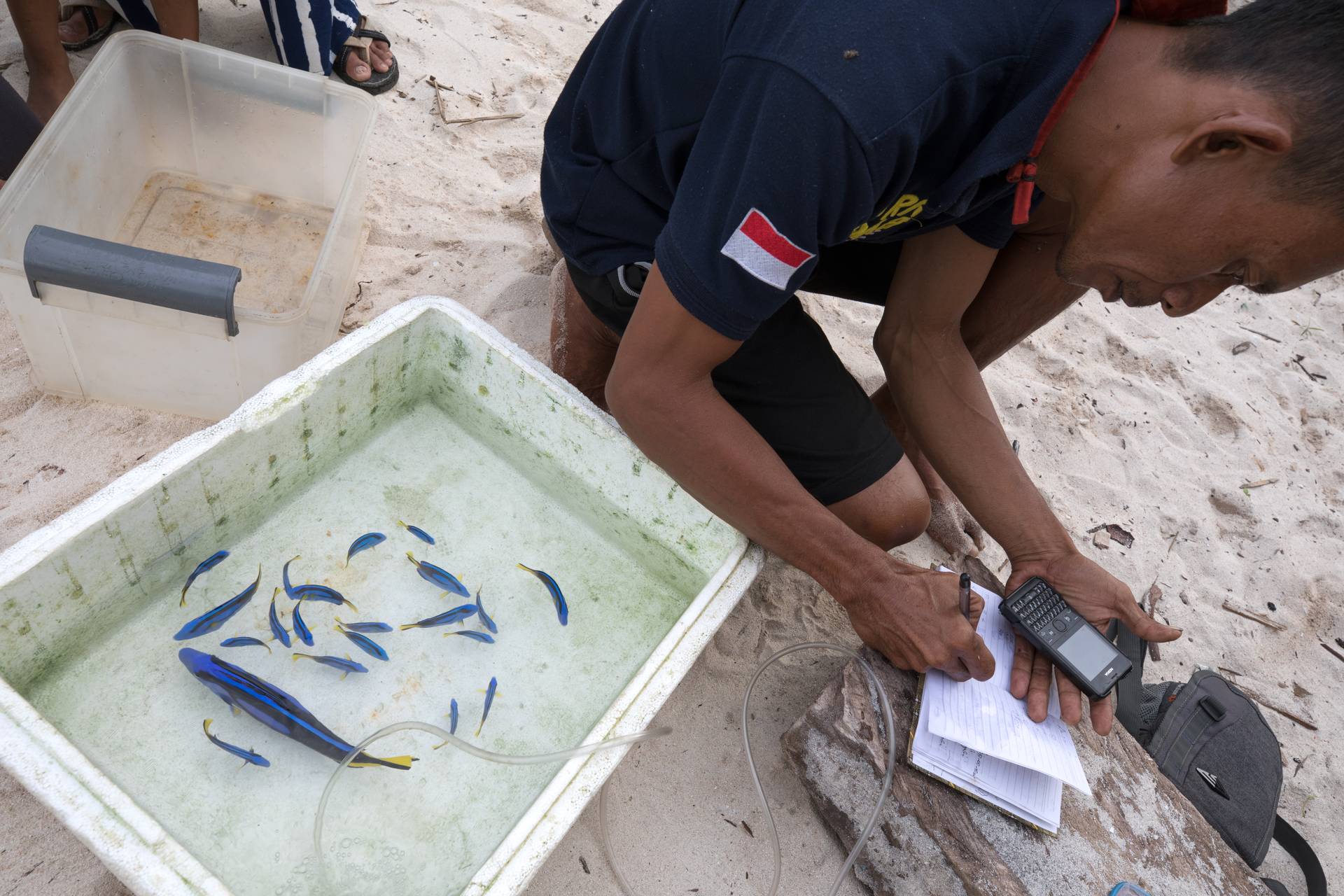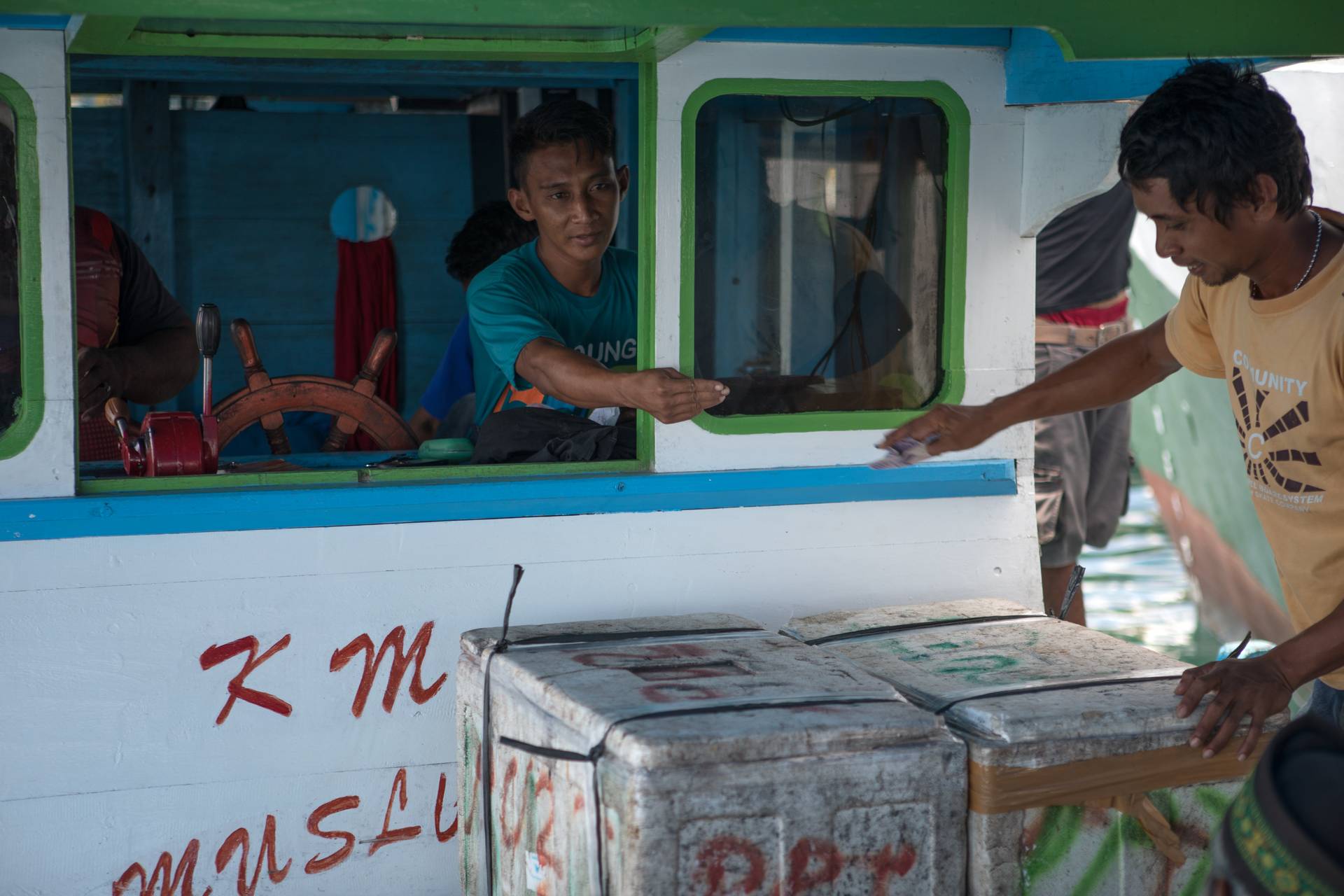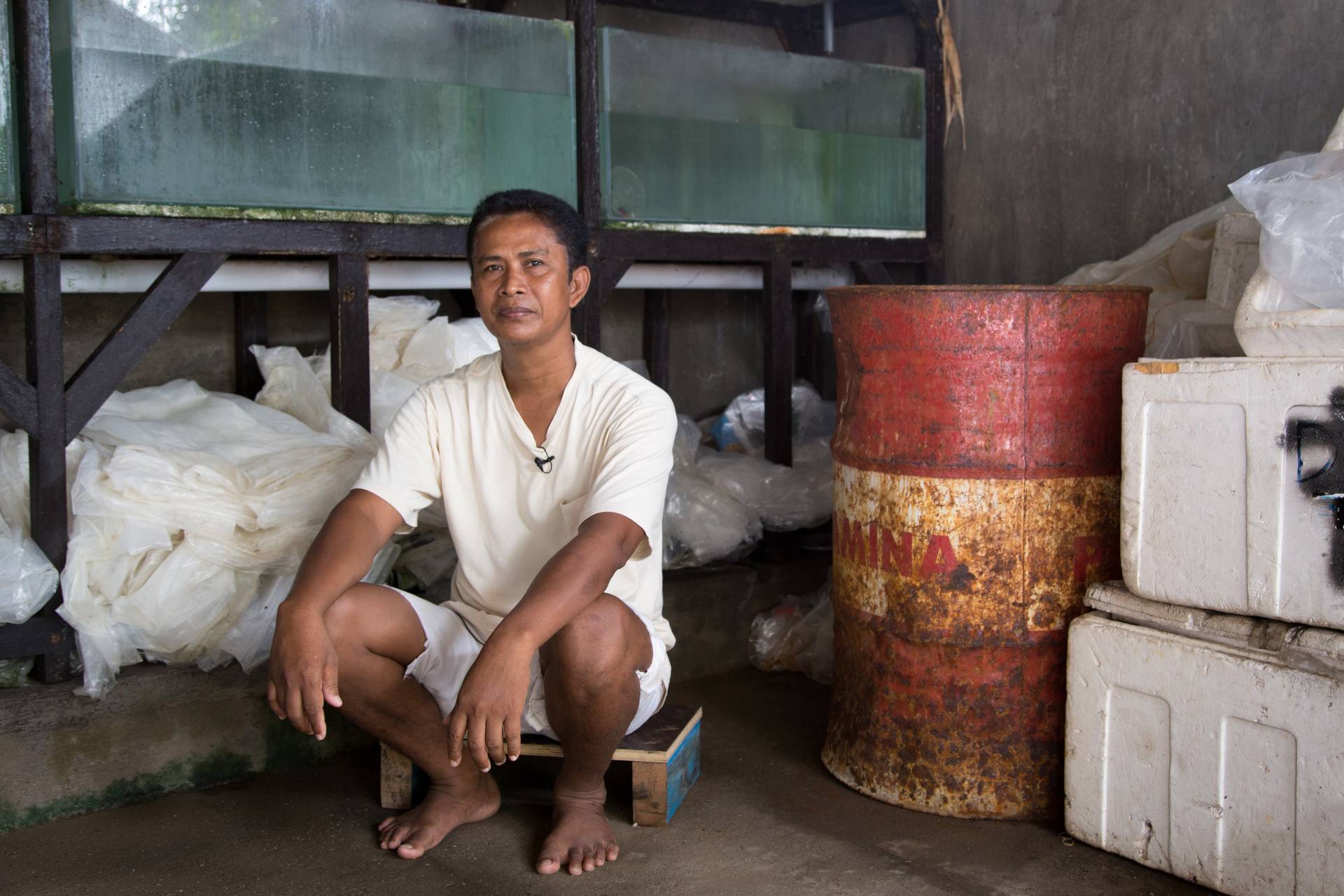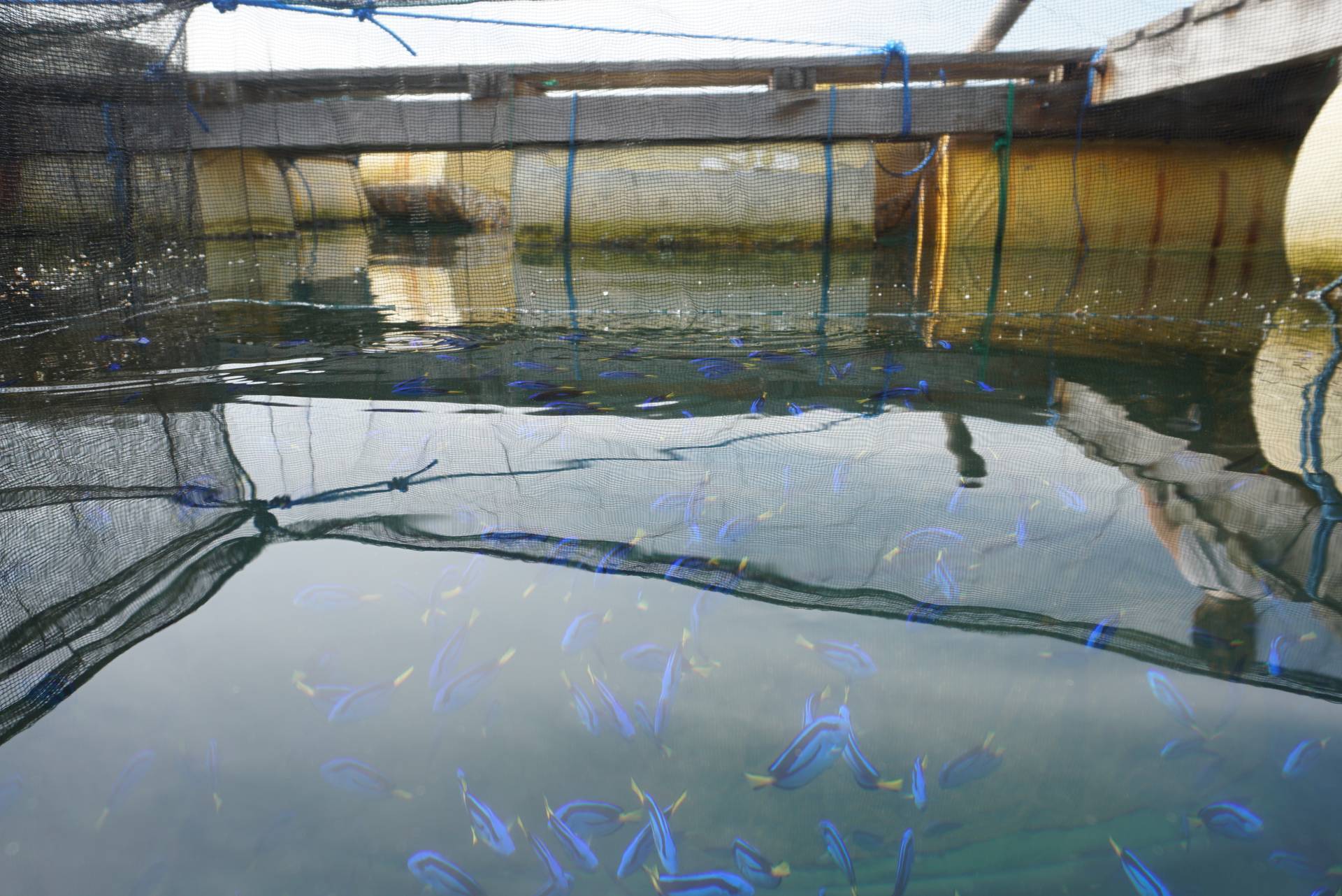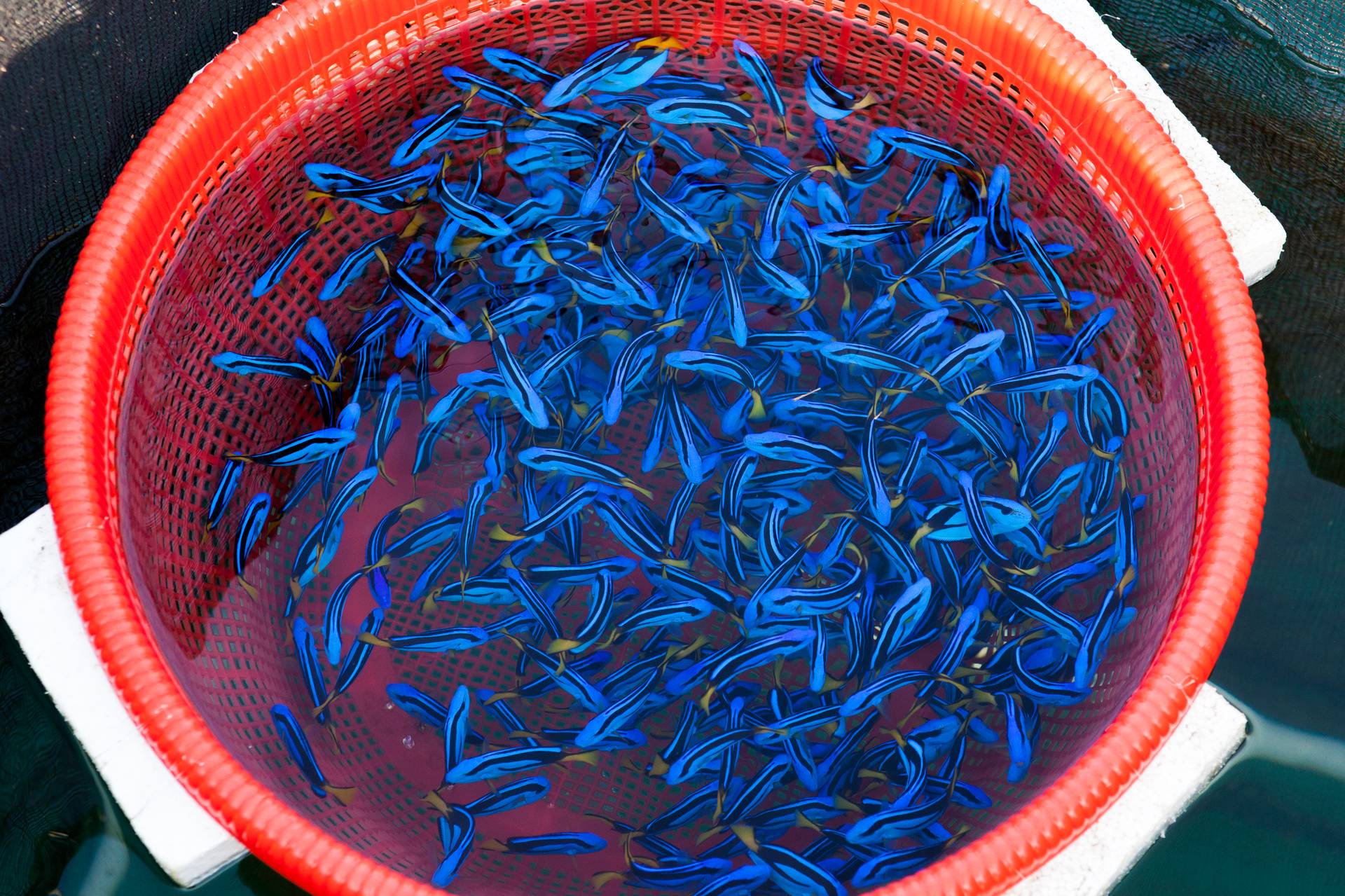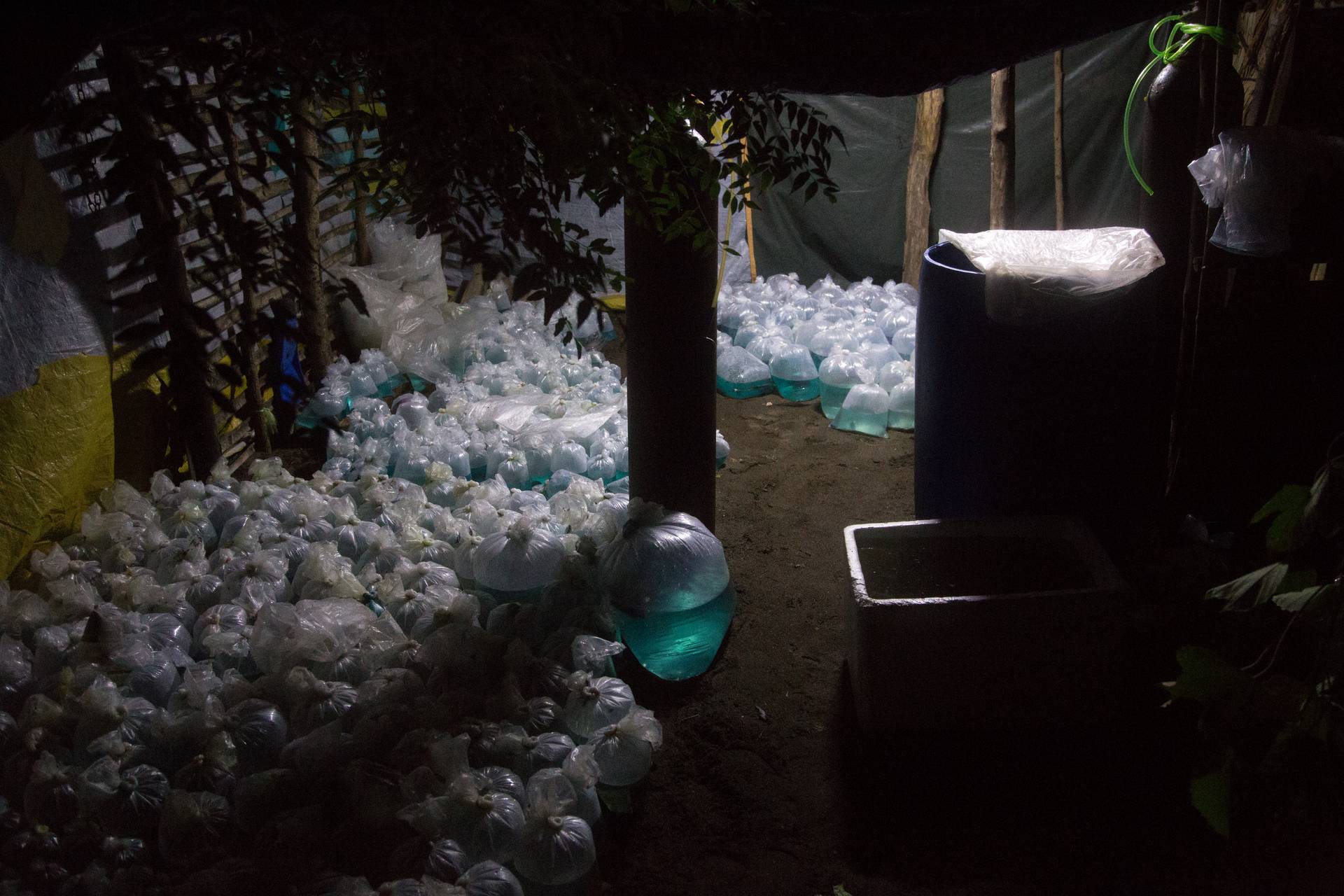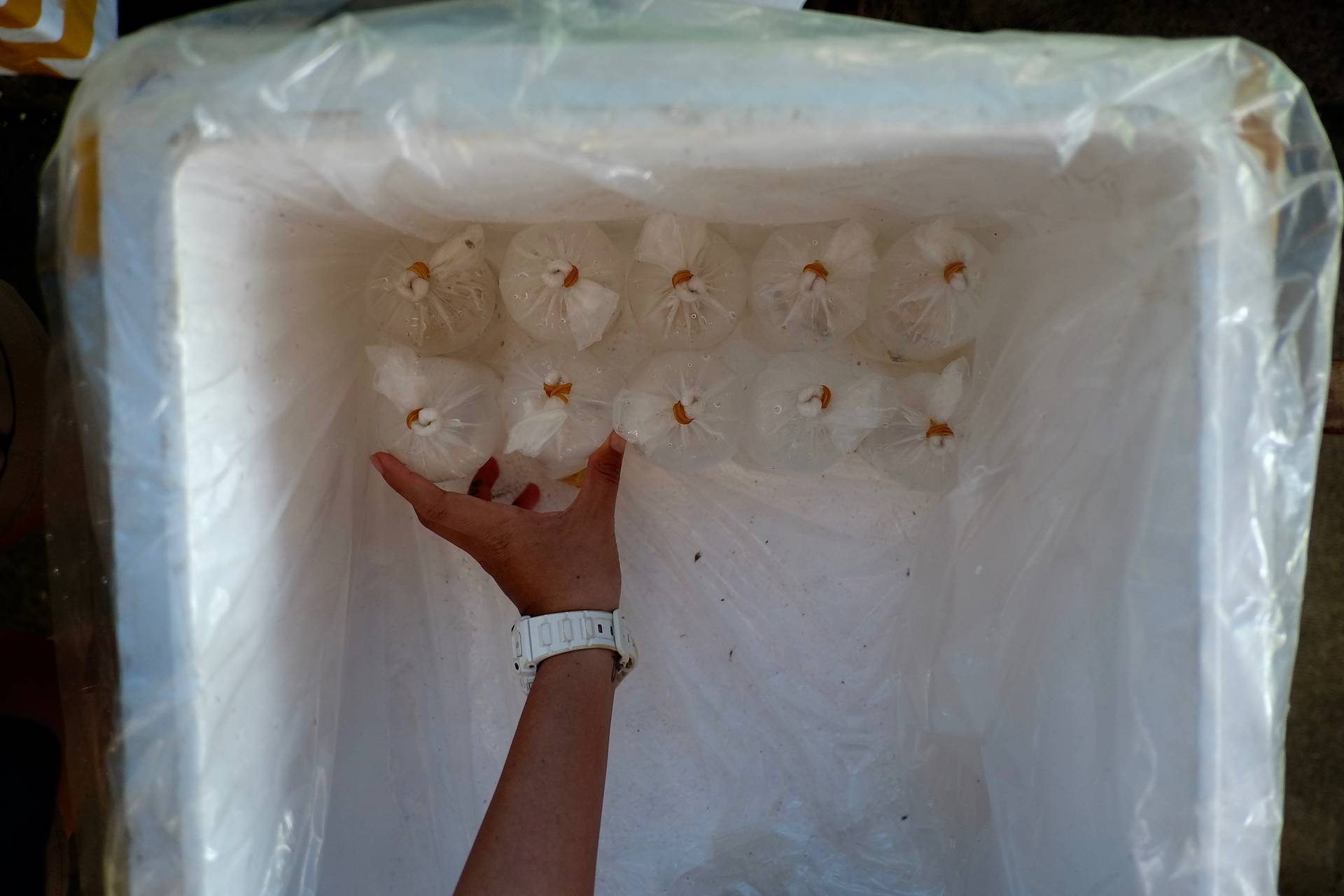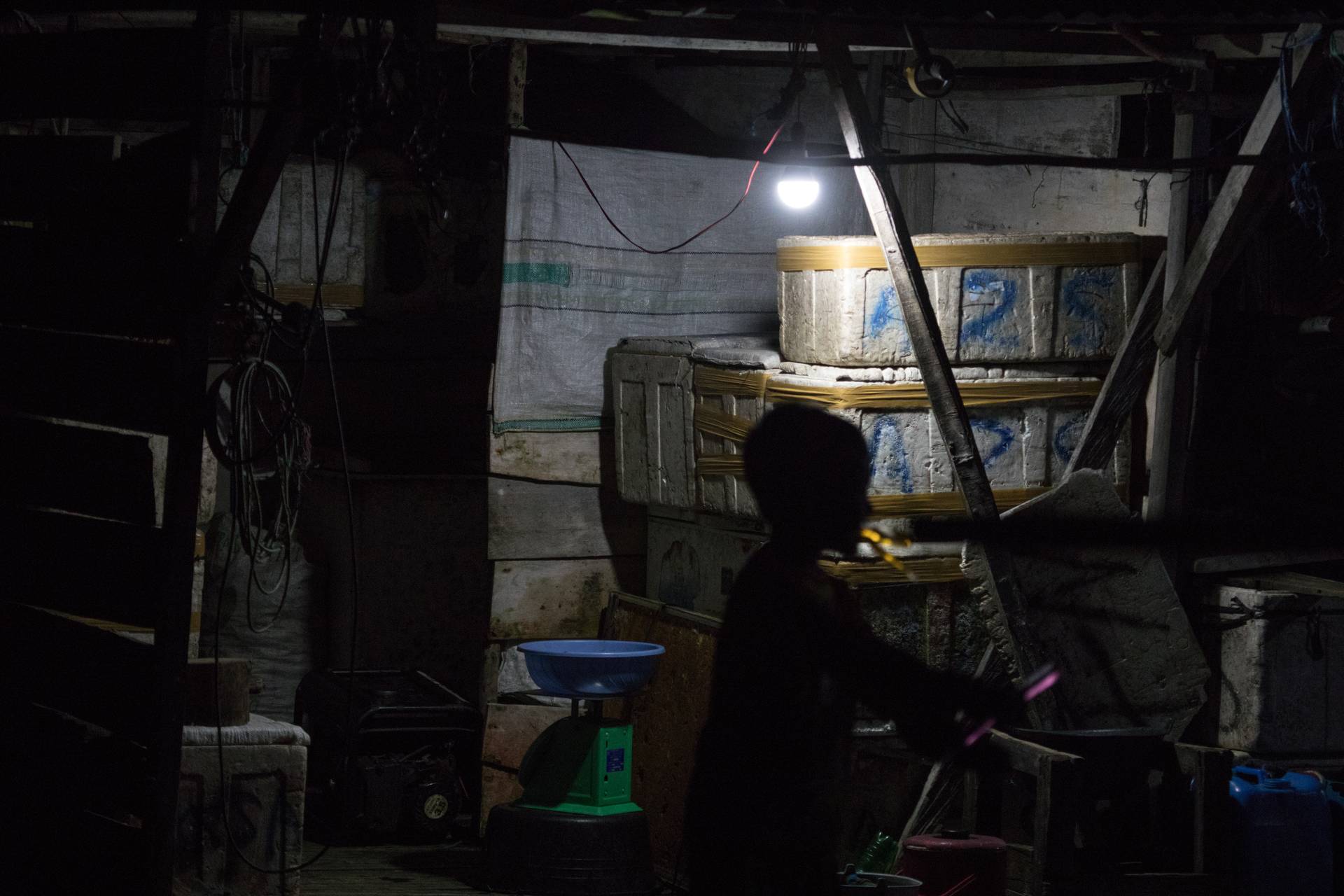MIDDLEMAN
Middlemen live sandwiched between two worlds, the collectors on one end and the exporters on the other. In other words, they have a lot of people to keep happy. Middlemen were initially the ones who introduced fishers to using cyanide, a toxic chemical sprayed on reefs to stun fish. This chemical allowed fishermen to increase the volume of fish caught, and the amount they could then sell up the supply chain. Middlemen encouraging fishers to use cyanide highlights the name of the game in the marine aquarium trade: to pass along as many fish as possible, as quickly as possible. Over the past decade, this mentality has been shifting as governments, NGOs and, in some cases, conscientious exporters are training both fishers and middlemen in better harvesting and handling practices that improve survival rates, rendering harmful, high-volume extraction unnecessary.
Sarli, is a middleman who works with the Sama-Bajau fishers in Toropot and lives on Banggai Island in Central Sulawesi. He is a six-hour boat ride away from his aquarium collectors, who specialize in collecting blue tang, and he visits them every three weeks or so to collect their harvested fish. Unlike some middlemen our team interviewed, Sarli feels that the collectors are his family and sees Toropot as a second home. He often spends several nights in the homes of his collectors and their families, enjoying meals together and talking shop. The collectors in turn have much respect and affection for Sarli, who they feel pays them fair wages and treats them equally. This is not the case with all collector-middlemen relationships, and often collectors are taken advantage of and paid unfairly for the life-threatening work they do.
“I like working as an ornamental fish trader, because I know more people out there—people from Jakarta and everywhere. I get to travel around different areas and make many new friends.”
– Sarli
Sometimes Sarli will join his collectors to oversee their harvesting techniques. Again, this is not true of all middlemen, who often only have a transactional relationship with the collectors and never know, nor care, how the fish were caught. Once Sarli gathers all the fish, he packs them in oxygenated bags stacked in Styrofoam containers and loads them on a small ferry-boat for the six-hour ride back to Banggai Island. There, he re-oxygenates and re-packs the fish to prepare them for another nine-hour boat ride to the mainland of Central Sulawesi in Luwuk. Sarli accompanies the fish to Luwuk, repacks them a third time, and then sends them on their way by plane. The fish fly another six hours to Banyuwangi, East Java where a regional middleman awaits. Regional middlemen aggregate fish from many local middlemen and ship them to exporters in Jakarta or, more often, Denpasar, Bali, the largest marine aquarium trade export hub in Indonesia. Here the fish await the final step of the export side of the supply chain.
